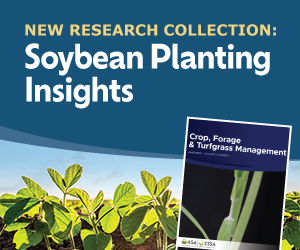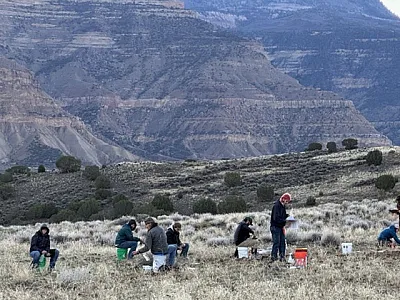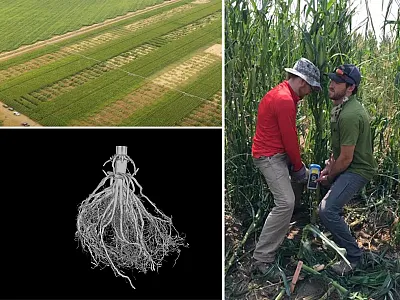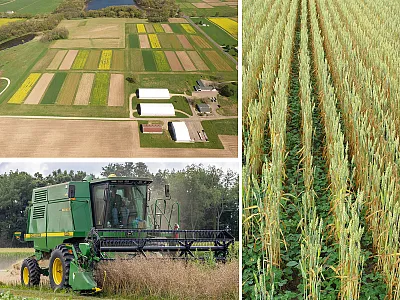Stratification Improves Water Distribution Within a Container
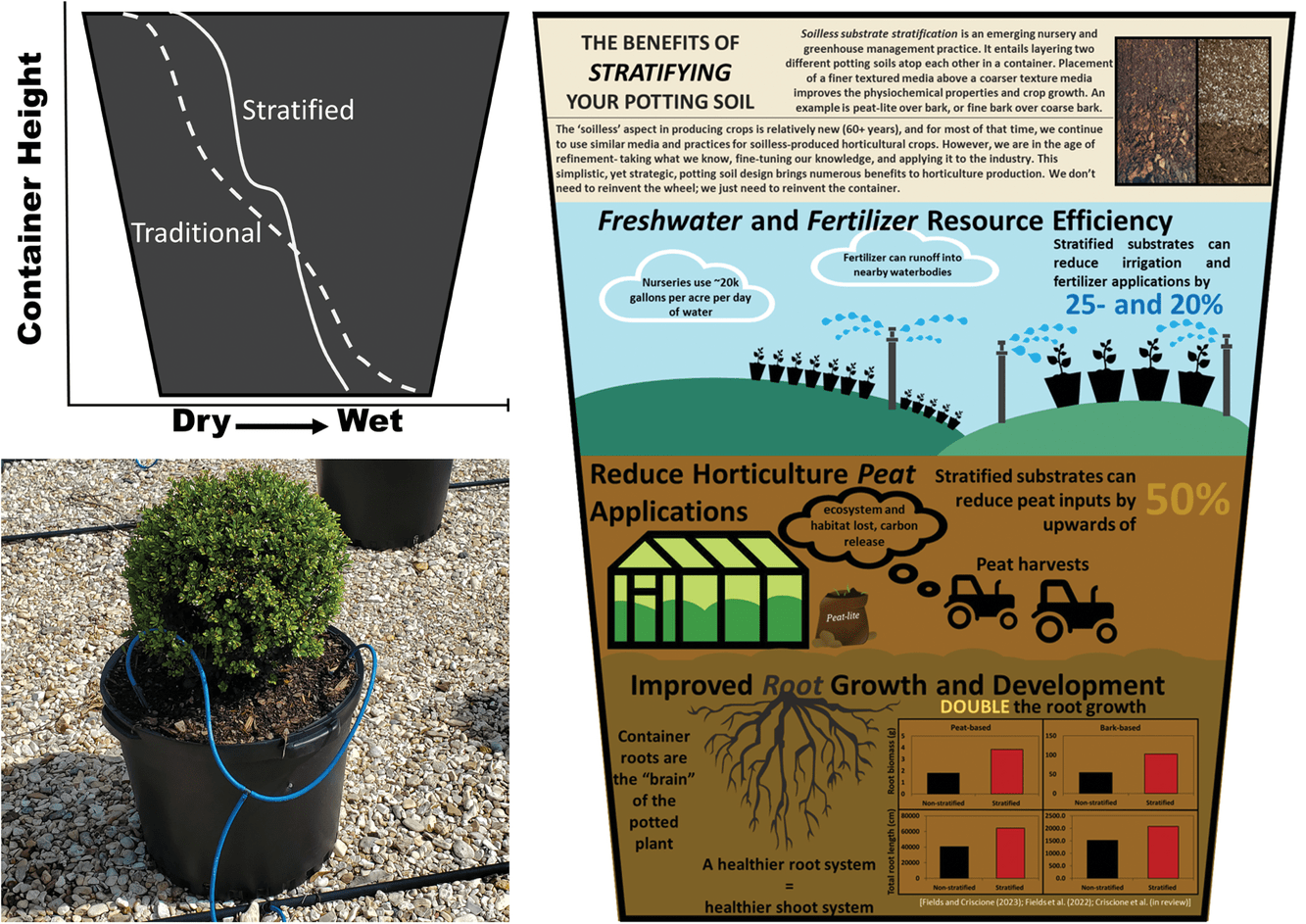
The greenhouse and nursery industry relies on growing media, or soilless substrates, to effectively mass produce a wide range of horticultural crops. Despite the extensive use of these substrates, there has been little effort to improve their overall efficiency regarding water management. Thus, soilless production requires frequent irrigation to maintain crop health.
In a study in Soil Science Society of America Journal, researchers explored how a new substrate stratification, layering different soilless media atop each other within a container (for example, fine bark over coarse bark particles), can improve substrate sustainability and water use. They studied different irrigation schedules and deficit strategies and used moisture sensors that measure how much water is being held in the whole container and how dry the substrate is in each layer.
The team found that stratified systems rebalance water‐holding and air‐filled porosity within the container, effectively defying gravity. This improves water storage in the top of the container where substrates tend to dry quickly and improves drainage in the bottom of the container where water is often held. By stratifying substrates while using a multiple‐irrigation‐schedule system, growers can improve the water dynamics in the container, reducing water needed to produce high quality crops.
Adapted from
Criscione, K. S., Fields, J. S., Owen, J. S., & Gentimis, A. (2024). Stratified substrates enhance water storage and distribution between irrigation events. Soil Science Society of America Journal, 88, 387–402. https://doi.org/10.1002/saj2.20636
Text © . The authors. CC BY-NC-ND 4.0. Except where otherwise noted, images are subject to copyright. Any reuse without express permission from the copyright owner is prohibited.




